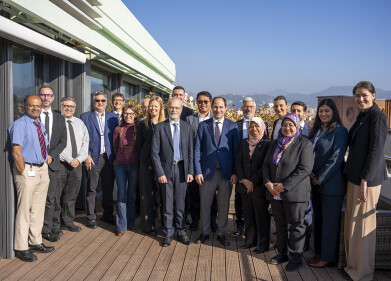Air clean up
Can We Conquer Air Pollution with Concrete?
Sep 10 2017
As well as forming the building blocks for many roadways, bridges and skyscrapers, it appears concrete might also have another beneficial use – combating air pollution. A new study conducted by researchers at the Stony Brook University in New York has found that powdered concrete could provide an innovative method of sucking contaminants out of the air.
Although the team concede that the technique might not be useful in countries which already have strict emissions policies in place, they believe that it could be instrumental in extracting harmful gases such as nitrogen oxides (NOx) and sulphur dioxide (SO2) from the atmosphere in the developing world.
Saying no to NOx
NOx is a dangerous contaminant capable of causing and exacerbating respiratory complications in those who inhale it. What’s more, it contributes to the production of smog and acid rain, which can have destructive effects on buildings and crops.
In 2014, a team of scientists at Stony Brook led by Girish Ramakrishnan found that the calcium compounds within concrete were capable of reacting with NOx, thus extracting them from the air and locking them within the concrete itself.
What’s more, they found that crushing the concrete into powdered form increased its surface area so much that a single gram of concrete could be manipulated to have a surface area of between 8m2 and 10m2 – similar to a small-sized room. This maximised the amount of NOx that the concrete could absorb.
Same story for SO2?
Recently, Ramakrishnan and his team decided to replicate their test to see if the concrete was equally adept at absorbing another pollutant – SO2. SO2 is also responsible for the creation of acid rain and damages the environment, as well as contributing to the production of soot particles. If inhaled, these can wreak havoc with the body’s airways and increase the likelihood of contracting bronchitis. To make matters worse, NASA recently discovered 39 sources of unreported SO2 pollution around the world.
To test the concrete’s efficacy, they created a filter out of 3g of powdered substance and ran a stream of SO2, mixed with nitrogen, through it for approximately eight hours. Though the results showed that it had indeed served to remove some of the SO2 from the gas, the small sizes involved made it all but impossible to quantify exactly how much had been extracted.
In order to obtain more precise results, the team plan to replicate the experiment using a larger filter. This time, they plan to incorporate 1kg (rather than 3g) of powdered concrete in their tests.
Limited scope for use
Even if successful, Ramakrishnan concedes that making concrete only to powder it might involve too much expense and labour to make it worthwhile. What’s more, recycled concrete is unlikely to be as efficient in extracting pollutants as its freshly made counterpart.
That means that in places like the UK, the USA and most of Europe, a concrete-based filter is probably not a feasible option. However, in developing countries, where SO2 is more abundant and laxer regulations are in place regarding emissions, it could make perfect sense.
What’s more, concrete which has already reacted with NOx and SO2 will be less likely to react with other materials in the future, such as chlorine. This means that the filters could be repurposed as road surfaces or building materials that would be less susceptible to weather damage than fresh concrete.
Events
Feb 05 2025 Nantes, France
Feb 16 2025 Kampala, Uganda
Feb 26 2025 Chennai, India
Feb 26 2025 Tulsa, OK, USA
WATERTECH CHINA (GUANGDONG) 2025
Mar 05 2025 Guangdong, China












